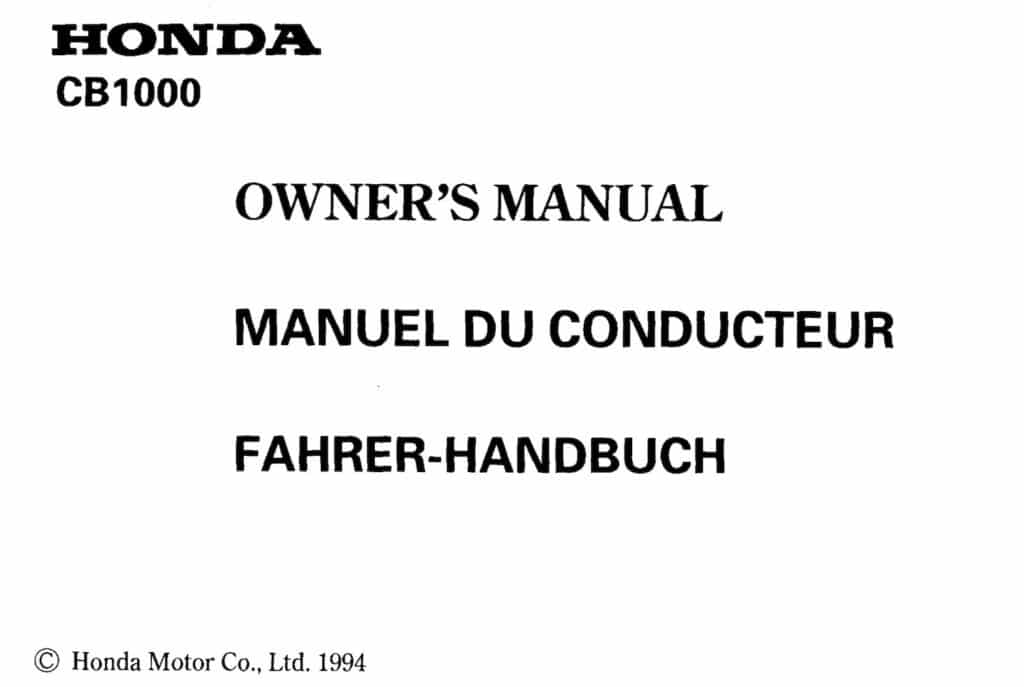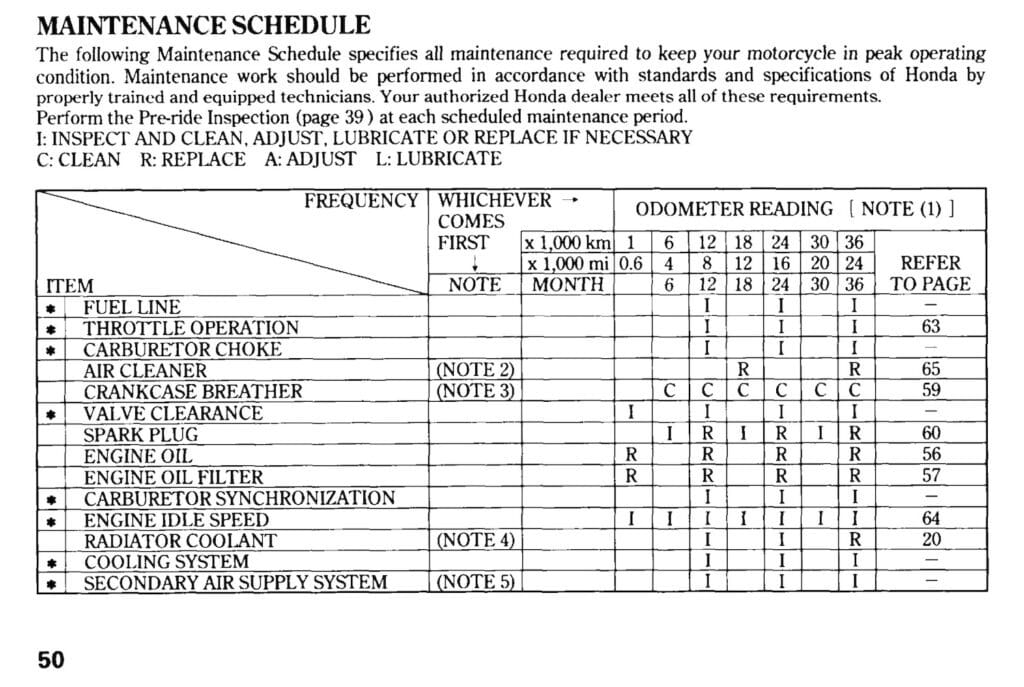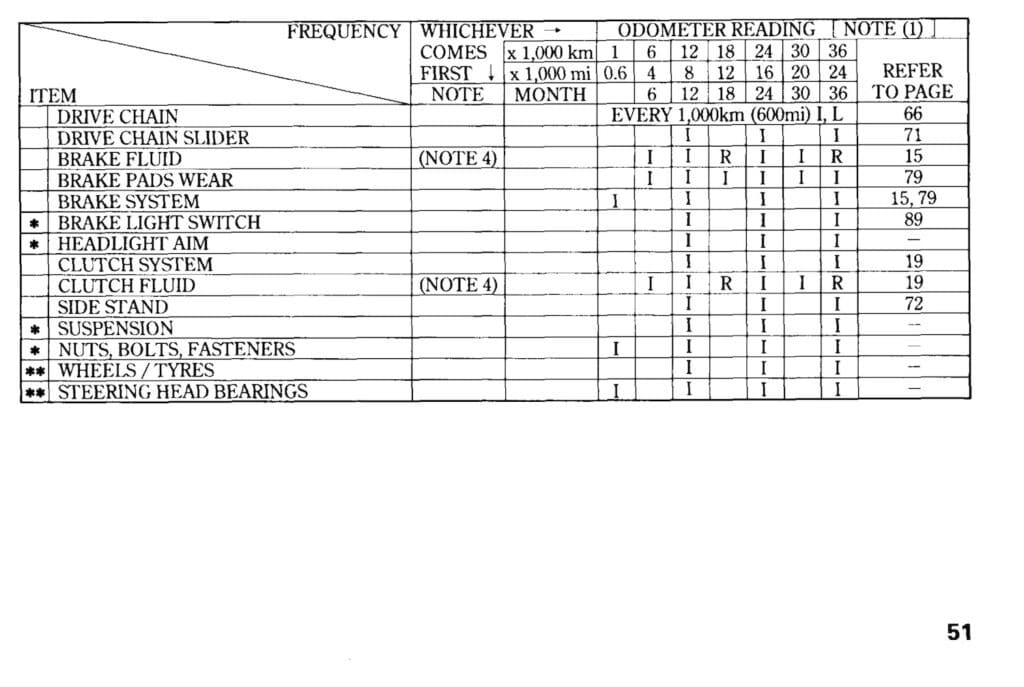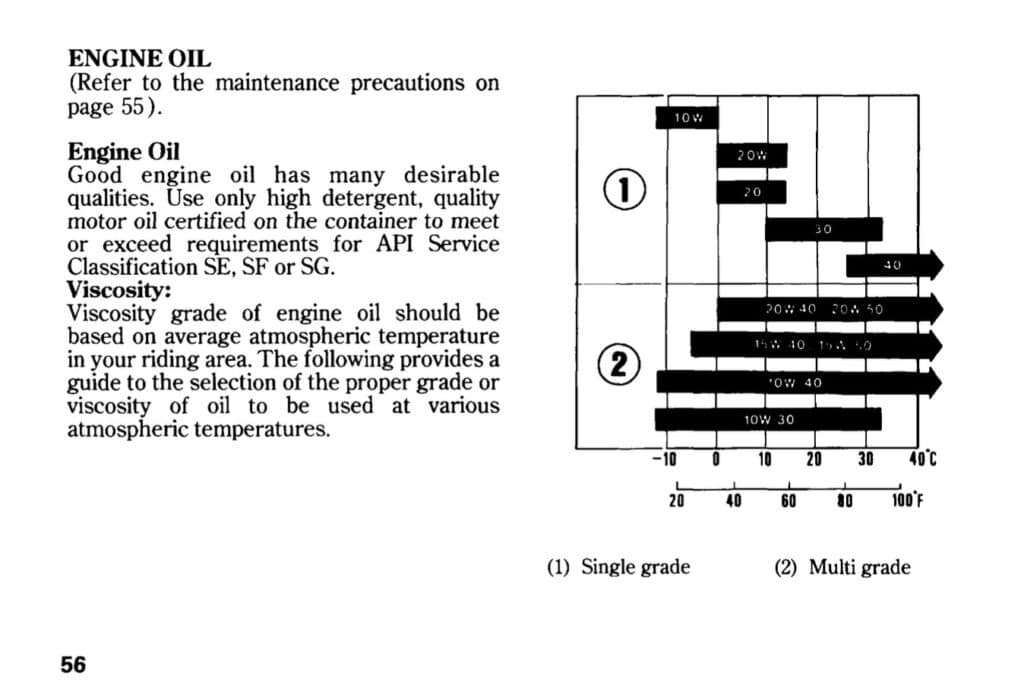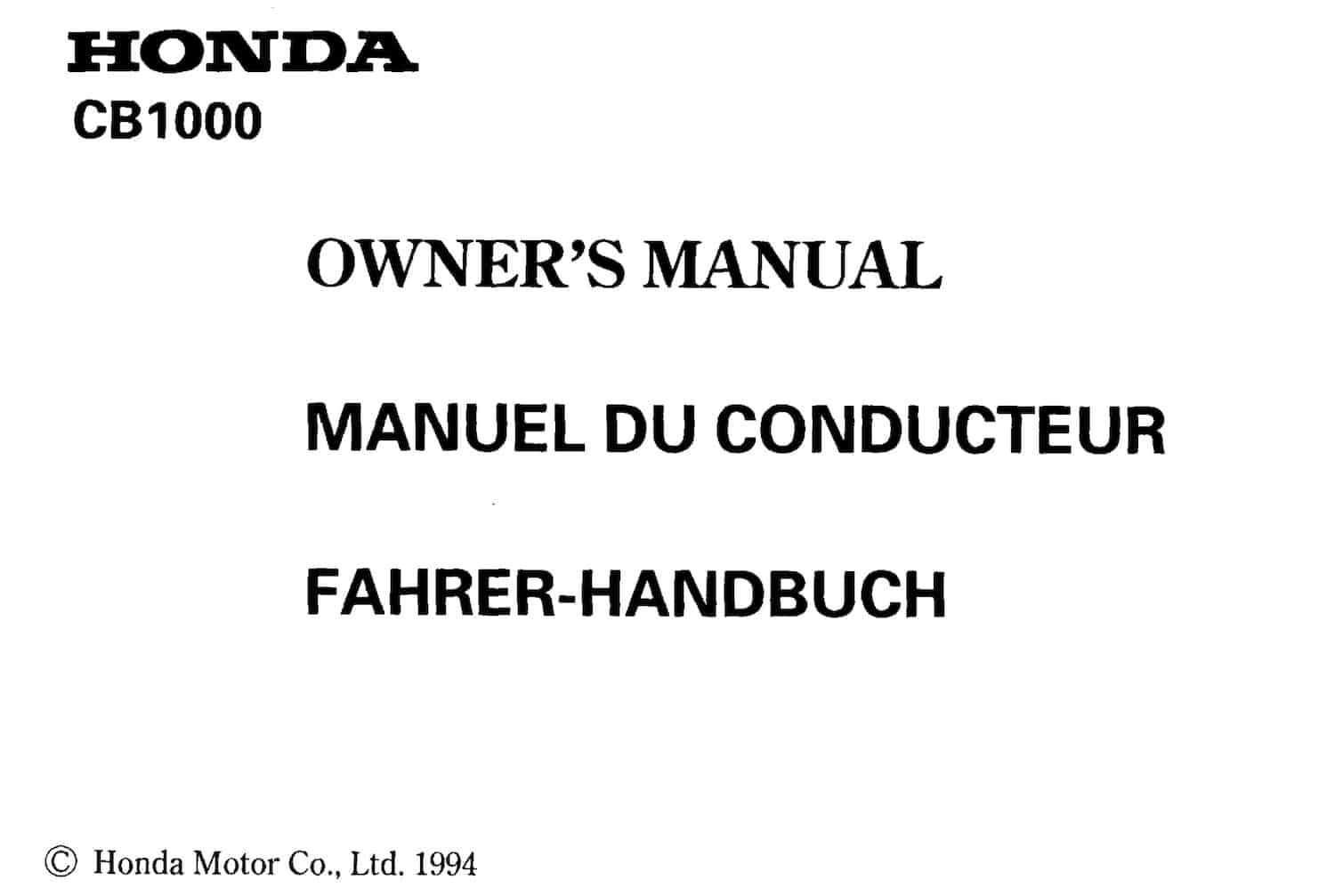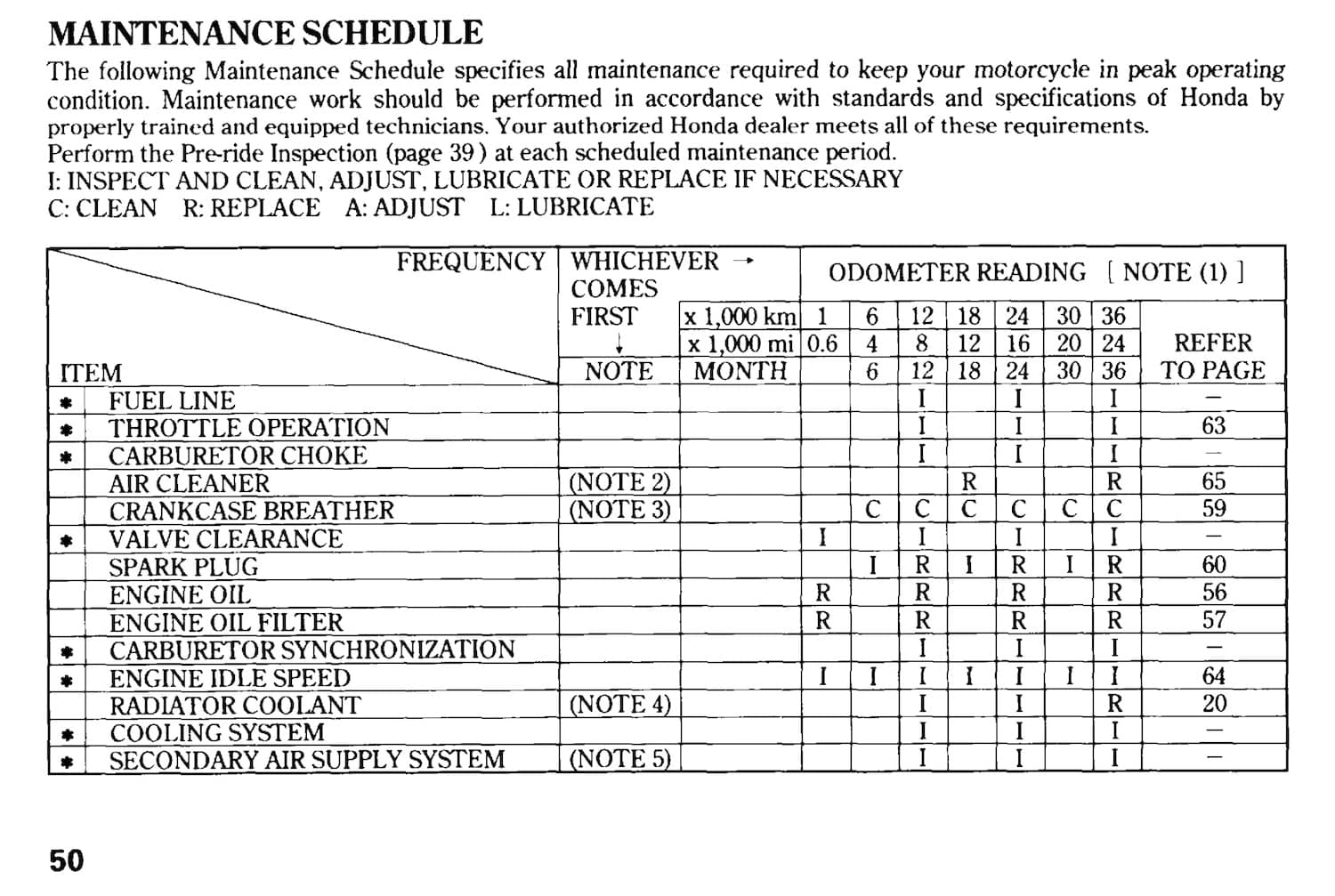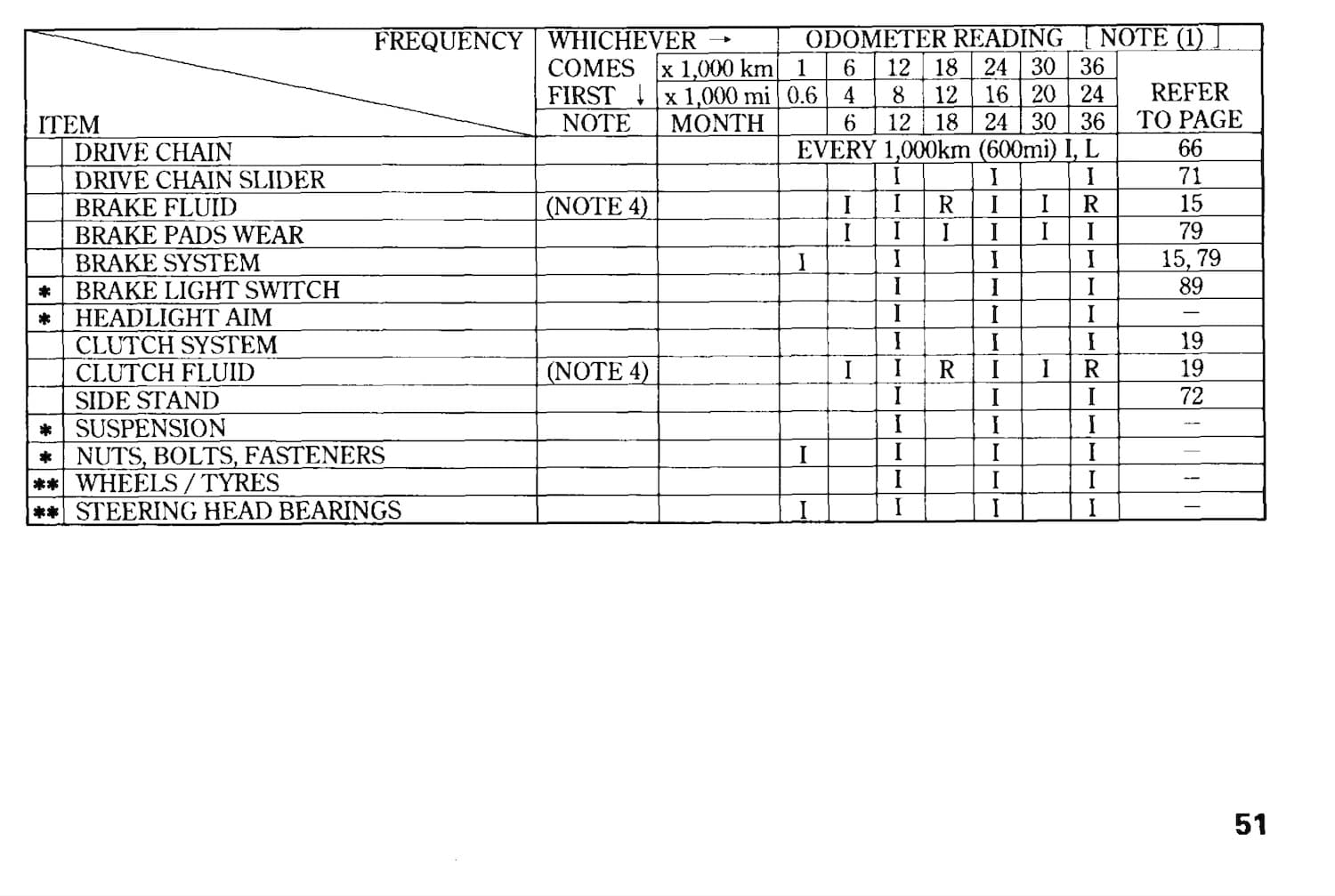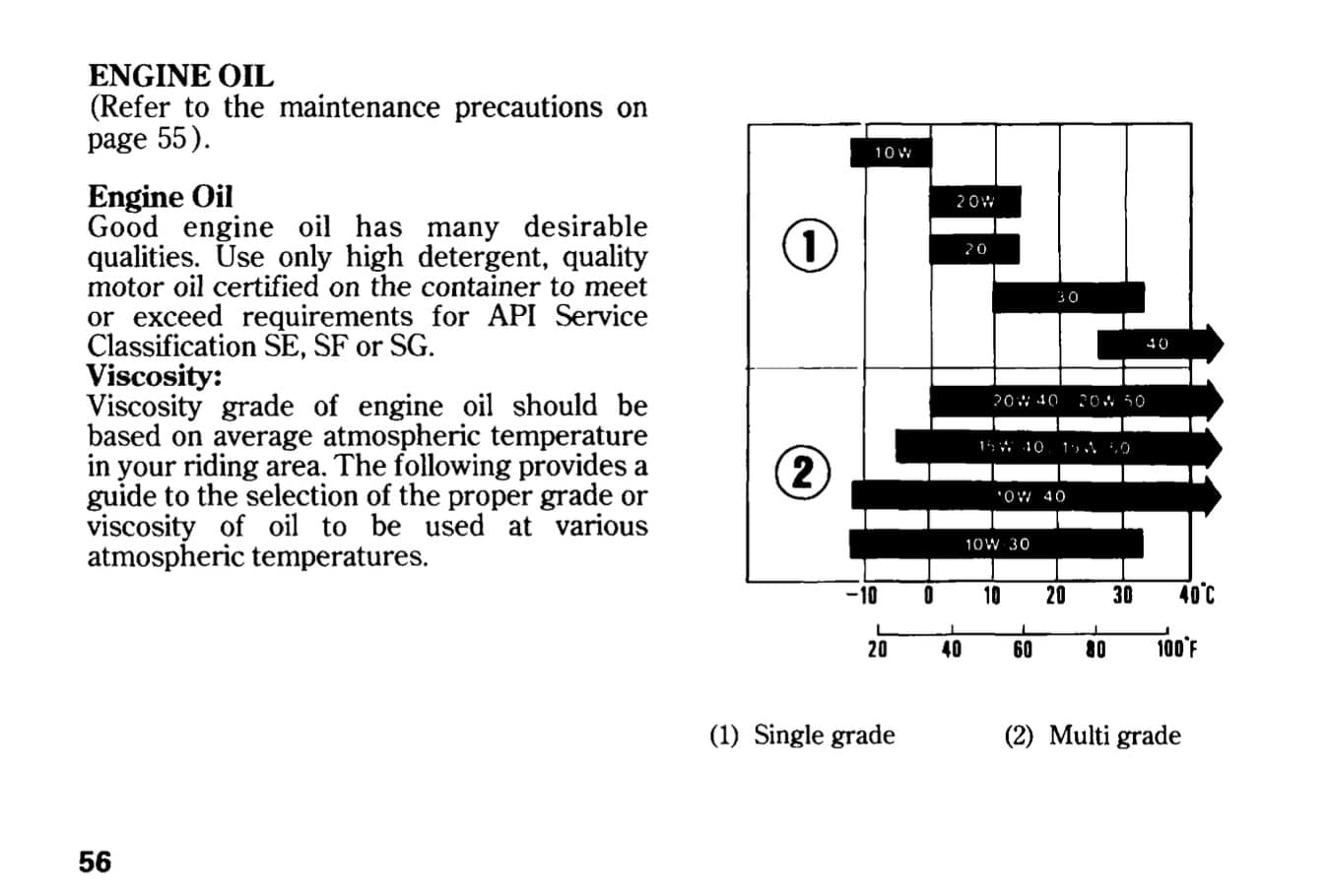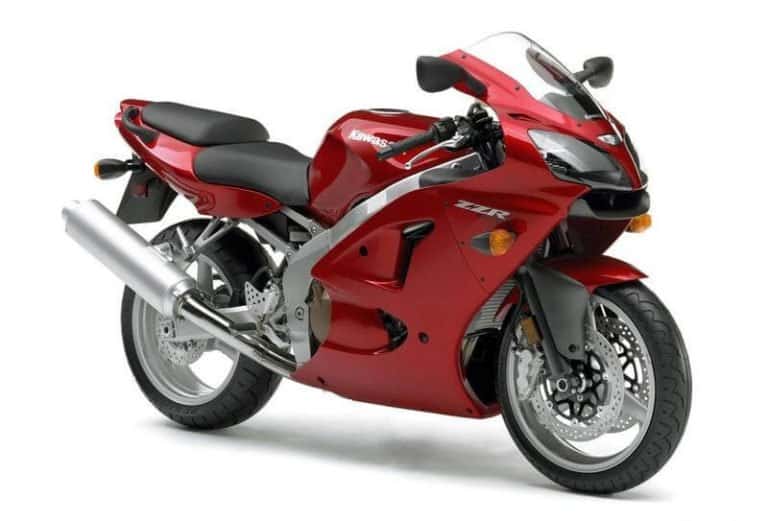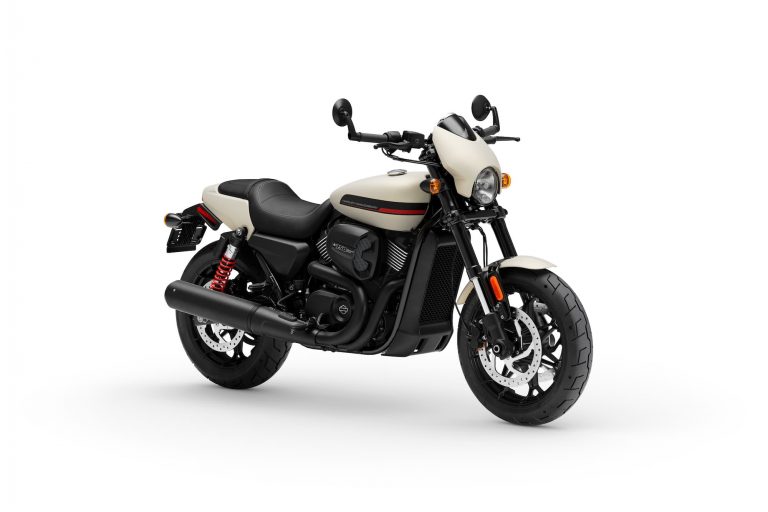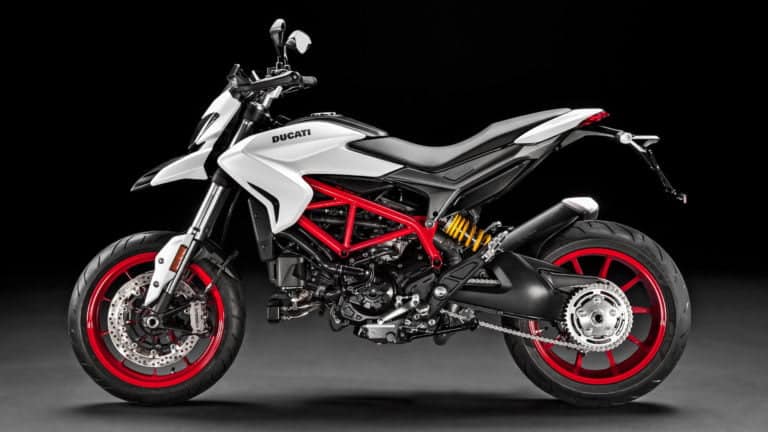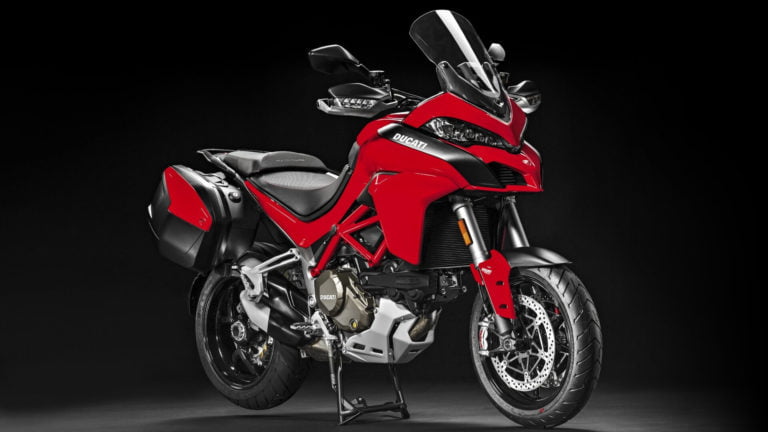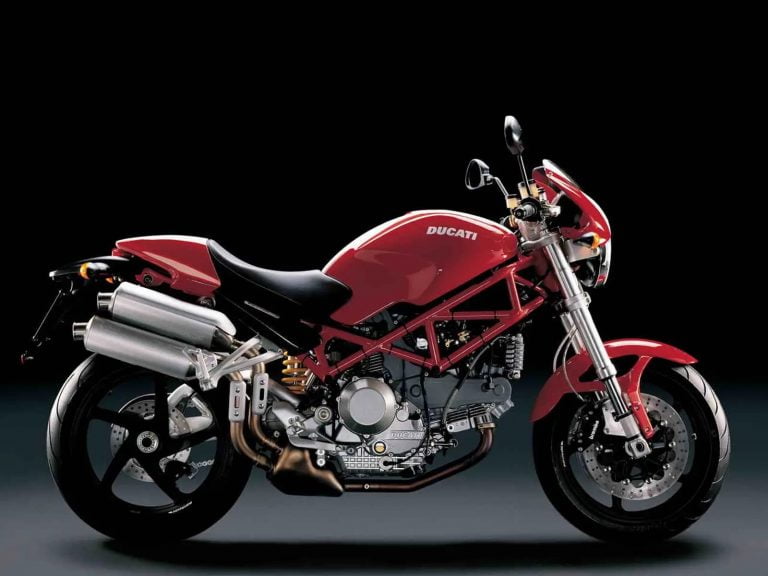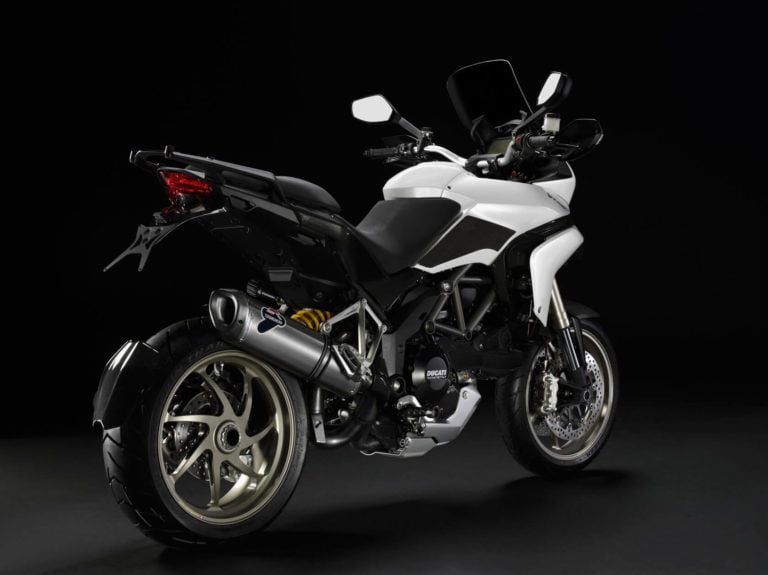Honda CB1000 “Project Big-1” Maintenance Schedule
This is the maintenance schedule of the Honda CB1000 Super Four, also known as “Project Big-1”. This is from the owner’s manual, verified from the service manual. And some additional useful bits of information from the service manual are included.
The CB1000 Super Four is based on a 998 cc liquid-cooled inline four-cylinder engine, originally mounted in the Honda CBR1000F, but detuned for a naked sport bike.
In the CB1000SF, the engine makes 98 hp / 71 kW at 8500 rpm, with peak torque of 84 Nm / 62 lb-ft coming on at 6000 rpm. The engine has four Keihin carburettors, and puts power down via a 5-speed transmission and chain drive.
The CB1000 Super Four was eventually replaced by the Honda CB1300 (fuel-injected).
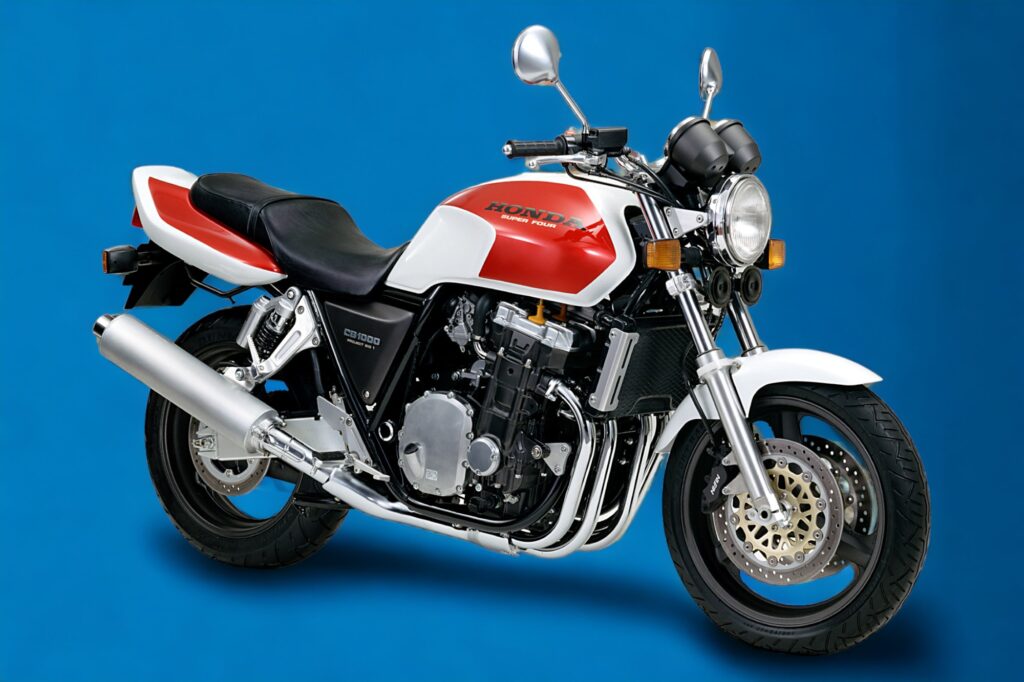
This site has links from which we earn a commission (which unfortunately nobody can save, not even us). If you appreciate this research work, then please use those links. Thanks.
About the Honda CB1000 Super Four
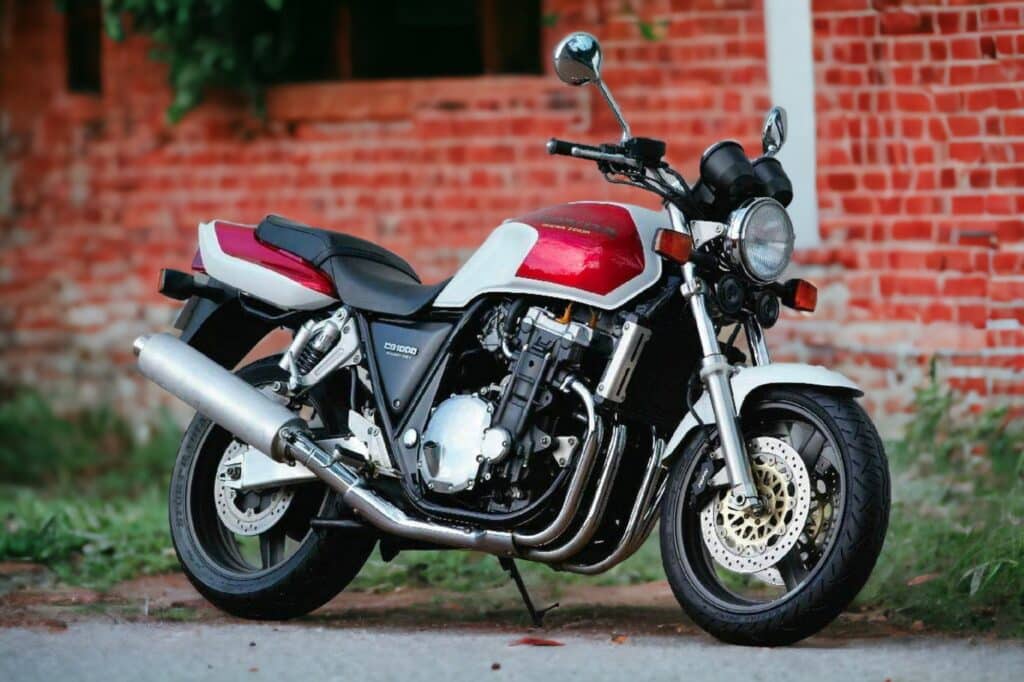
The Honda CB1000 Super Four was a transitional “standard” Honda motorcycle.
It took the engine of the Honda CBR1000F “Hurricane”, which made 130 hp in base trip, and lopped off around 1/4 of that peak in favour of a milder, midrange-focused tune.
But Honda also took around 14 kg / 30 lb of weight off the Honda CBR1000F, from removing all the fairing and mounting hardware.
The Honda CB1000 Super Four is a basic bike. The suspension is non-adjustable at the front, and the shocks are adjustable only for preload.
But it has all the essentials for a basic motorcycle ride. Conventional forks. Twin four-piston calipers on large discs. Five-speed transmission. Everything you need for a basic everyday ride.
General ride quality on the Honda CB1000 is excellent. It has smooth power all through the rev range, though there’s a little buzz around 5,000-5,500 rpm.
Handling is great. Though it’s a heavy bike, it’s easy at any speed, whether walking pace or powering out of curves. There’s loads of steering lock, and the high centre of gravity is intentional, to make the bike easier to tip.
Unfortunately, Americans only got the Honda CB1000 for a couple of years, and it didn’t sell too well in that period.
The Honda CB1000 was eventually replaced by the first-gen carburettor-fed CB1300 (which the Americans didn’t get, either). While that’s an excellent bike, it’s also a step up in complexity. For one thing, the change in style of engine design means that to adjust the CB1300’s valves, you have to remove the camshafts. That distinctly increases the complexity of the job. (Of course, you do it less often. So, pros and cons.)
See more information about the design process at Honda’s site here.
Core specs of the Honda CB1000 Super Four / Project Big-1
These are from official sources, including press releases and the owner’s manual.
| Item | Spec | Notes |
|---|---|---|
| Engine | DOHC liquid-cooled inline four, four valves per cylinder | |
| Capacity | 998 cc | |
| Bore / stroke (mm) | 77 x 53.6 | |
| Compression ratio | 10.0:1 | vs CBR1000F 10.5:1 |
| Induciton | 4 x 34 mm Keihin carburettors | |
| Peak power | 72 kW / 98 hp @ 8500 rpm | vs CBR1000F’s 125 hp |
| Peak torque | 84 Nm / 62 lb-ft @ 6000 rpm | |
| Final drive | Chain, 5-speed | |
| Front suspension | Conventional 43mm forks, non-adjustable | From RC30 |
| Rear suspension | Dual shocks, preload adjustable | Same internal build as CBR900RR / CBR600F2 |
| Front brakes | 2 x 310mm discs, 4-piston calipers | |
| Tank capacity | 22 L / 5.8 US gal | |
| Dry weight | 235 kg / 518 lb | |
| Curb weight (49 state) | 260 kg / 573 lb |
Service Intervals for the Honda CB1000 Super Four “Project Big-1”
Overall, the maintenance intervals for the CB1000 reflects many early big fours:
- Every 4000 miles / 6000 km, do an inspection of safety elements, and the spark plugs.
- Every 8000 miles / 12000 km, do an oil change and valve clearance inspection, plus go over the motorcycle, looking at the inspection checklist.
Change the oil every year, regardless of mileage. This is common modern advice.
Some other items, e.g. changing coolant or changing brake / clutch fluid, should be done periodically instead.
While the valve clearances do need to be serviced quite often, access is fairly easy and they’re of a screw and locknut type, so the job isn’t a big one — you don’t have to remove the camshafts.
Maintenance Schedule
Below is the maintenance schedule for the Honda CB1000 Super Four “Project Big-1”.
Rather than as one block, it’s organised into two sections — a major items maintenance schedule, and the standard inspection checklist.
| km x 1000 | 6 | 12 | 18 | 24 | 30 | 36 | |
|---|---|---|---|---|---|---|---|
| mi x 1000 | 4 | 8 | 12 | 16 | 20 | 24 | Every |
| Standard inspection checklist (see below) — Perform | ✓ | ✓ | ✓ | ||||
| Engine oil — Change Manual recommends 10W-40 with SE, SF, or SG+ rating, e.g. Mobil 1 10W-40 Tighten plug to 30 Nm / 22 lb-ft | ✓ | ✓ | ✓ | Year | |||
| Oil filter — Change (HF303RC) Tighten to 10 Nm / 7 lb-ft | ✓ | ✓ | ✓ | Year | |||
| Spark plugs — Inspect Gap: 0.8-0.9mm | ✓ | ✓ | ✓ | ||||
| Spark plugs — Change (NGK DPR9EA-9) | ✓ | ✓ | ✓ | ||||
| Air filter — Change (HFA1914) | ✓ | ✓ | |||||
| Engine idle speed — Inspect / adjust 1000 rpm +/- 100 rpm | ✓ | ✓ | ✓ | ✓ | ✓ | ✓ | |
| Valve clearances — Inspect / adjust | ✓ | ✓ | ✓ | ||||
| Brake and Clutch fluid — Inspect level | ✓ | ✓ | ✓ | ✓ | |||
| Brake and Clutch fluid — Change (Castrol DOT 4) | ✓ | ✓ | 2 years | ||||
| Brake pads wear — Inspect | ✓ | ✓ | ✓ | ✓ | ✓ | ✓ | |
| Coolant — Change | ✓ | 3 years |
Standard service checklist
Do the following checks on your Honda CB1000 as part of every scheduled inspection.
| Honda CB1000 Project Big-1 Inspection Checklist |
|---|
| Fuel Lines — Check condition, correct routing, and for no cracks |
| Throttle operation and free play – Lubricate with Protect all cable life Target free play: 2-6 mm (0.1-0.2 in) |
| Carburetor choke — check operation |
| Cooling system — Check for no leaks, and that fans come on |
| Drive chain slider — Check wear level. Replace as necessary |
| Clutch system — Check for correct function, and clutch free play |
| Brake system — Check for proper function |
| Brake light switch — Check lights come on |
| Wheels/Tires — Check for dents, tire condition, tread depth |
| Suspension — Check for smooth operation, no leaks |
| Headlight aim — Check, re-adjust after adjusting suspension |
| Side stand / Centre stand — Check for smooth function, lubrication condition |
| Steering head bearings — Check for smooth operation |
| Nuts, bolts, fasteners — Check for presence. Replace / retighten as needed |
| Secondary air supply system — Check |
| Crankcase breather — Check, clean as needed |
Maintaining the Chain on the Honda CB1000 Super Four
It’s important to maintain your chain on the CB1000, as on any chain-driven motorcycle, but particularly a big torquey standard that you’re likely to use in a variety of situations.
Use a good-quality and portable chain lubricant like Motul chain paste, or a Motul chain care kit which comes with a couple of handy tools to maintain the chain (brushes etc.).
Honda recommends you follow the following chain maintenance schedule:
| Chain maintenance item | Every |
|---|---|
| Check drive chain lubrication condition, lubricating if necessary | 600 mi / 1000 km |
| Check drive chain slack, adjusting if necessary | 600 mi / 1000 km |
Notes:
- Do these items (checking/adjusting slack, and checking/applying lubrication) more often if you ride your CB1000 in dusty or rainy conditions.
- Always lubricate the chain after washing the motorcycle (assuming the chain gets wet).
To check the slack on the Honda CB1000 Super Four, put the motorcycle in neutral, onto its kickstand, and on a level surface.
Check the slack on the lower part of the chain, midway between the sprockets, and check it in multiple places (move the motorcycle forwards and backwards) as chains wear unevenly.
Slack on the CB1000 is defined as the free vertical movement of the chain.
Target chain slack for the CB1000 Super Four: 25-35mm (1.0-1.4 in)
If the chain slack is out of spec, you need to adjust it.
Adjusting chain slack
To adjust the chain slack on the CB1000, follow the steps below. As with measuring chain slack, make sure that the motorcycle is on a level surface on its kickstand, in neutral, with no weight on it (no saddlebags / luggage).
- Loosen the rear axle and the adjuster lock nuts on either side of the axle.
- Turn the adjuster nuts to tighten (or loosen) the chain. Keep checking the chain tension to see if it has come within spec. (Target chain slack: 25-35 mm / 1.0-1.4 in)
- Keep an eye on the adjuster alignment marks on either side of the axle. Make sure that the adjustment is to the same point.
- When you’re done, tighten the axle to 93 Nm / 67 lb-ft.
- Re-check the chain slack again to make sure it’s still within spec.
If you can’t adjust the chain to within spec, and you get to the “red zone” on the label, then the chain is excessively worn and you have to replace it.
Wheels and Tyres
Below are the standard tire sizes and recommended pressures for the CB1000 Big One.
The CB1000 Super Four has odd 18-inch front and rear tires, which will limit selection options somewhat.
| Wheel | Tire size | Tire pressure (cold) |
|---|---|---|
| Front | 120/70R18 59V | 250 kPa / 2.5 bar / 36 psi |
| Rear | 170/60R18 73V | 290 kPa / 2.9 bar / 42 psi |
Standard Maintenance Torque Settings
Below are maintenance torques for the CB1000 Super Four.
| Item | Nm | lb-ft |
|---|---|---|
| Engine oil drain bolt | 30 | 22 |
| Oil filter | 10 | 7 |
| Spark plug | 15 | 11 |
| Valve adjuster lock nut | 23 | 17 |
| Front wheel axle nut | 59 | 43 |
| Front wheel caliper bolts | 31 | 22 |
| Rear wheel axle nut | 93 | 67 |
Reference — Screenshots from the Manual for the CB1000 Big-1
Below are screenshots from the manual for the Honda CB1000 Super Four “Project Big-1”.
You can see or download a searchable version of the CB1000’s manual below.
You can download an original from Honda’s Australia site here.
